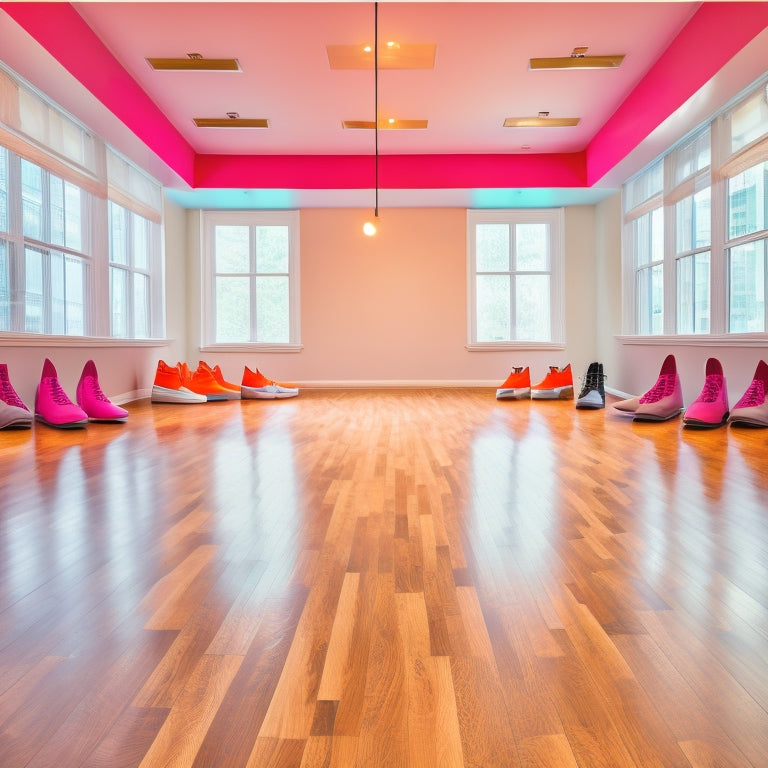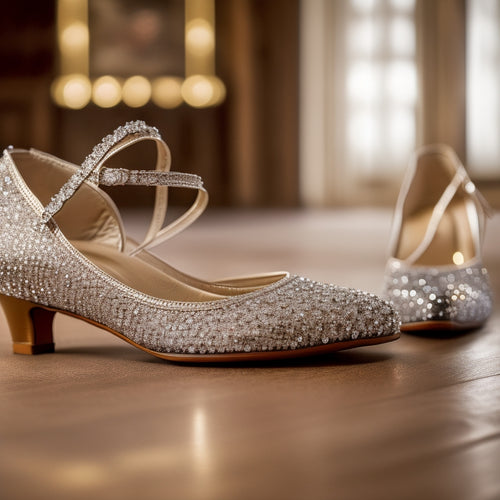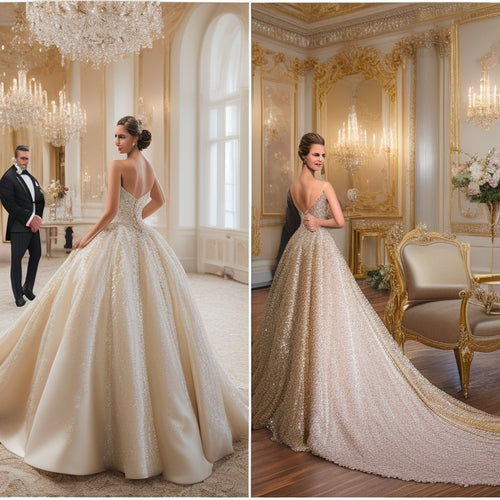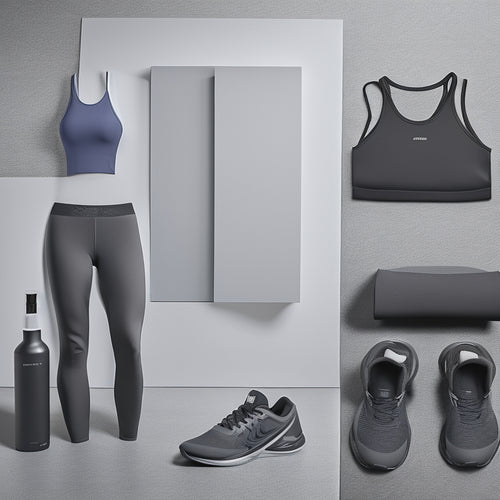
3 Best Dance Practice Shoes for Comfort and Support
Share
When selecting the best dance practice shoes for comfort and support, focus on three key features. First, choose shoes with enhanced grip, utilizing traction patterns that suit your dance style, like herringbone for hip-hop. Second, guarantee they provide proper arch support to promote stability and reduce injury risk. Finally, opt for breathable materials that manage moisture and enhance comfort during long sessions. By addressing grip, support, and breathability, you'll improve your performance and enjoyment. There's much more to investigate about finding the perfect pair customized for your specific needs.
What You Need to Know
- Look for shoes with rubber soles and traction patterns like herringbone or circular for enhanced grip during various dance styles.
- Ensure proper arch support for your foot type to maintain alignment and reduce injury risk during intense movements.
- Choose shoes with adequate cushioning to absorb shock, reduce foot fatigue, and protect joints during practice.
- Opt for durable, breathable materials with moisture-wicking properties to keep feet comfortable and dry during lengthy sessions.
- Select reinforced toe protection to enhance shoe longevity and support rigorous dance routines while ensuring comfort.
Enhanced Grip for Safety
When selecting dance practice shoes, the sole material plays an essential role in providing enhanced grip for safety.
Understanding the traction patterns of different materials can help you prevent slips and falls during your routines.
Sole Material Considerations
The sole material of your dance practice shoes plays an essential role in providing the enhanced grip necessary for safe movements. When selecting the right material, consider its flexibility and how it affects your performance. A flexible sole allows for natural foot movement, which contributes to the sole flexibility benefits, enabling you to execute intricate steps without restriction.
Moreover, the sole's design greatly influences weight distribution effects. A well-constructed sole helps distribute your weight evenly across the foot, reducing the risk of slips and enhancing stability during lively movements.
Look for materials that offer a blend of durability and traction, such as rubber or specialized synthetic composites. These materials not only provide superior grip on various surfaces but also withstand the wear and tear of rigorous practice.
Ultimately, prioritizing the right sole material in your dance shoes will enhance your overall safety and performance. You'll find that each step feels more controlled, allowing you to express your artistry fully without fear of stumbling.
Invest in shoes that prioritize grip through thoughtful sole material choices, and you'll dance with confidence.
Traction Patterns Explained
Understanding traction patterns is essential for maximizing grip in dance practice shoes. The right traction not only enhances your performance but also guarantees your safety on the dance floor. Different patterns offer various traction benefits, catering to diverse styles and movements.
Here's a breakdown of common traction patterns and their grip versatility:
| Traction Pattern | Benefits | Best For |
|---|---|---|
| Herringbone | Excellent grip and flexibility | Hip-hop, jazz |
| Circular | Multi-directional movement support | Ballet, contemporary |
| Grid-like | Balanced support and traction | Modern, tap |
| Chevron | Strong forward grip | Salsa, ballroom |
| Wave-like | Smooth shifts | Lyrical, freestyle |
When selecting your dance shoes, consider how these traction patterns align with your style. Shoes with a herringbone pattern might offer better grip during complex routines, while those with wave-like patterns could enhance fluidity. Prioritizing the right traction can boost your performance while preventing slips or falls. By understanding these elements, you can choose shoes that provide the freedom and confidence you crave in your dancing experience.
Improved Foot Stability
When selecting dance practice shoes, consider the critical role of arch support and cushioning for impact.
Proper arch support helps maintain foot alignment, reducing the risk of injuries during intense movements.
Additionally, adequate cushioning absorbs shock, enhancing stability and comfort as you perform.
Arch Support Importance
Focusing on arch support is essential for dancers seeking improved foot stability during practice. Understanding your foot arch types is the first step in selecting the right dance shoes. Flat arches, high arches, or neutral arches each require specific support to maintain balance and prevent injuries.
Proper arch support benefits your overall performance by distributing weight evenly across your feet, reducing strain on muscles and tendons.
When you choose shoes with adequate arch support, you enhance your foot's natural biomechanics. This support allows for better alignment, ensuring that your movements are fluid and controlled. Additionally, it minimizes the risk of conditions like plantar fasciitis, which can sideline you from practice.
Incorporating arch support into your footwear not only aids in foot stability but also contributes to enhanced agility, allowing you to execute intricate dance moves with confidence.
It's about creating a solid foundation for your artistry. By prioritizing arch support, you're investing in a sustainable practice that enables you to dance freely and expressively, without the burden of discomfort or injury holding you back.
Cushioning for Impact
Cushioning plays an important role in absorbing the impact of every leap, turn, and landing during dance practice. The right cushioning technologies can greatly enhance your comfort, allowing you to dance freely without the nagging worry of foot fatigue or injury.
Look for shoes that incorporate advanced shock absorption techniques, which help to mitigate the stress on your joints with each movement. These techniques often include responsive foam layers or gel inserts designed to adapt to your foot's shape and movements, ensuring ideal support.
A well-cushioned shoe not only reduces impact forces but also promotes improved foot stability, which is vital for executing complex dance routines.
When selecting your dance shoes, pay attention to the cushioning density; too soft may compromise stability, while too firm mightn't provide adequate shock absorption. You want a balance that allows for both comfort and control.
Prioritize shoes that offer a combination of lightweight materials and effective cushioning technologies, enabling you to express your artistry without limitations. By investing in proper cushioning, you'll enhance your performance and protect your body, allowing your passion for dance to flourish.
Durable Materials for Longevity
When choosing dance practice shoes, consider the materials that contribute to durability.
Breathable fabric options not only enhance comfort but also reduce wear and tear, while reinforced toe protection provides essential support during rigorous movements.
It's important to verify that the shoes accommodate your foot width, as finding the perfect fit can greatly impact your performance.
Selecting shoes made from these durable materials guarantees your footwear lasts longer, allowing you to focus on your performance.
Breathable Fabric Options
For dancers seeking ideal performance, selecting shoes made from breathable fabrics is essential for both comfort and durability. Breathable materials allow for better airflow, which helps regulate temperature and prevents overheating during intense practice sessions.
Look for shoes crafted from lightweight materials that offer flexibility without sacrificing support.
Moisture-wicking properties are vital in maintaining a dry, comfortable environment for your feet. Fabrics like mesh and synthetic blends effectively draw sweat away from your skin, reducing the chances of blisters and discomfort. This feature becomes particularly important during long rehearsals or performances, where you'll want to maintain focus on your movements rather than your footwear.
Additionally, consider shoes that combine breathability with durability. High-quality breathable fabrics aren't only lightweight but also resistant to wear and tear, ensuring your shoes can withstand the rigors of daily training.
Investing in shoes that prioritize these features means you'll enjoy enhanced performance and longevity. By making informed choices about breathable fabric options, you're setting yourself up for success, allowing you to move freely and confidently on the dance floor.
Reinforced Toe Protection
Durability is an essential factor in the longevity of dance practice shoes, and reinforced toe protection plays a considerable role in achieving this. A well-designed toe box not only enhances shoe flexibility but also withstands the rigors of repeated movements. When you choose shoes with reinforced toe protection, you're investing in a design that supports your dance experience.
Here's a breakdown of key features to take into account:
| Feature | Importance |
|---|---|
| Reinforced Toe Box | Protects against wear and tear |
| Durable Materials | Guarantees longevity and performance |
| Flexibility | Allows for natural movement |
| Breathability | Enhances comfort during practice |
| Lightweight Design | Reduces fatigue over time |
Selecting shoes with these attributes means you can dance freely without worrying about damaging your footwear. Reinforced toe protection contributes considerably to overall shoe performance, allowing for ideal movement while providing the necessary support. Remember, your choice in toe box design can make all the difference in how you feel during practice, guaranteeing you focus on your dancing rather than your footwear limitations.
Sizing for Optimal Fit
To guarantee optimal fit, proper sizing is vital in selecting your dance practice shoes. You should measure your foot accurately, paying attention to both length and width, as a precise fit enhances comfort and performance.
Dancers should also consider their unique foot shape, as shoes are available in narrow, wide, and medium widths to accommodate individual needs.
Neglecting these factors can lead to discomfort and hinder your ability to execute movements effectively, making it necessary to visit a dancewear store for a proper fitting of recommended ballet shoes.
Importance of Proper Sizing
Finding the right size in dance practice shoes can greatly impact your performance and comfort. Proper sizing guarantees your feet are securely supported, allowing for fluid movement without restrictions.
When shoes are too tight or too loose, it can lead to injuries or discomfort, disrupting your dance flow.
Consider your unique foot shape when selecting your shoes. Some brands offer custom fitting options that cater to various foot types, accommodating high arches, wide feet, or narrow profiles.
This customized approach can enhance your overall dancing experience, providing the freedom you desire while minimizing the risk of blisters or calluses.
Additionally, the right fit contributes to your balance and stability, essential elements for executing intricate dance moves.
When shoes fit correctly, they allow you to connect with the floor, optimizing your control and precision.
Measuring Your Foot Correctly
Accuracy in measuring your foot is vital for achieving the best fit in dance practice shoes. Using proper foot measurement techniques can prevent discomfort and enhance your performance.
To begin, make sure you're measuring at the end of the day when your feet are slightly swollen, as this gives a more accurate size. Stand on a piece of paper and trace your foot, marking the longest and widest points.
Next, measure the length from the heel to the toe and the width at the widest part. It's important to measure both feet, as they can differ in size.
Many dancers make common sizing mistakes, like only measuring one foot or assuming their shoe size remains constant. Remember, shoe sizes can vary greatly between brands, so don't rely solely on your usual size.
When you have your measurements, consult the brand's sizing chart to find your ideal fit. If you're in between sizes, consider trying the larger option for added comfort.
A precise measurement guarantees your dance practice shoes provide the comfort and support you need, allowing for freedom of movement and expression.
Breathable Fabric for Comfort
When selecting dance practice shoes, the breathability of the fabric is essential for maintaining comfort during extended sessions.
Choosing stylish and versatile women's leather Latin dance shoes made from breathable materials allows for proper air circulation, reducing moisture buildup that can lead to discomfort or irritation.
Prioritizing this feature not only enhances your performance but also contributes to overall foot health.
Importance of Breathability
Breathability in dance practice shoes plays an important role in enhancing your comfort and performance. When you're dancing, your feet generate heat and moisture, which can lead to discomfort and distractions. Shoes made from breathable fabrics allow for effective moisture management, keeping your feet dry and reducing the risk of blisters.
Materials like mesh or moisture-wicking textiles facilitate airflow, promoting temperature regulation during intense practice sessions. With proper breathability, you'll notice your feet remain cooler, allowing for longer practice times without fatigue. This is significant, especially when you're working on intricate routines or pushing your limits.
Shoes that lack breathability can trap heat and moisture, leading to an unpleasant environment that hampers your performance. Additionally, breathability contributes to the overall longevity of your shoes. Excess moisture can degrade materials, leading to premature wear and tear.
Frequently Asked Questions
Can I Use Regular Sneakers for Dance Practice?
You can use regular sneakers for dance practice, but they have limitations. Dance shoes offer better flexibility and support, enhancing your performance. Sneakers may restrict movement, reducing the benefits you'd gain from specialized footwear.
How Often Should I Replace My Dance Practice Shoes?
Regularly replacing your dance shoes enhances your performance. Generally, you should swap them out every 6-12 months, depending on usage. A worn-out shoe shortens its lifespan, negatively impacting your dancing and overall experience.
Do Dance Shoes Require Specific Cleaning Methods?
Yes, dance shoes require specific cleaning methods based on shoe materials. Use gentle cleaning techniques to avoid damage. Regularly maintain them to guarantee longevity and performance, keeping your footwear in ideal condition for movement and expression.
Are There Dance Shoes Specifically Designed for Certain Dance Styles?
Did you know that 60% of dancers experience discomfort without proper footwear? Dance shoes feature style-specific benefits, enhancing performance through customized support, flexibility, and grip, ensuring you dance freely and confidently in your chosen style.
How Much Should I Expect to Spend on Quality Dance Shoes?
You can expect to spend between $50 and $150 on quality dance shoes. Focus on durable dance shoe materials and guarantee a proper shoe fit; this enhances performance and comfort, allowing you to move freely.
Explore More
To summarize, choosing the right dance practice shoes is like finding a partner who perfectly complements your style. By prioritizing enhanced grip, foot stability, and breathable materials, you'll not only guarantee comfort but also enhance your performance. Remember, a proper fit is vital to avoid distractions, allowing you to focus on perfecting your moves. Invest wisely in durable shoes, and you'll be dancing on clouds, ready to conquer every routine with confidence and ease.
Related Posts
-

Best Ballroom Dance Shoes for International Style
When you're selecting the best ballroom dance shoes for International Style, focus on essential features like grip, c...
-

7 Formal Dance Dresses for Black-Tie Events
For your next black-tie event, consider these seven stunning formal dance dresses that promise to turn heads. A class...
-

What Are the Essential Performance Clothing Items for Your Next Workout
When it comes to crushing your next workout, the right performance clothing can make all the difference. You'll want ...


